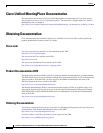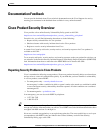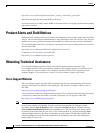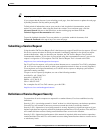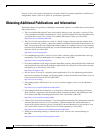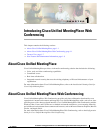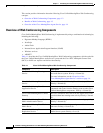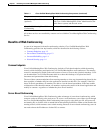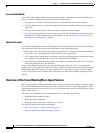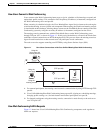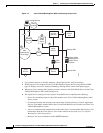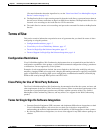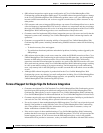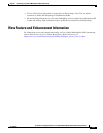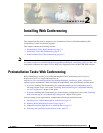
1-4
Installation and Upgrade Guide for Cisco Unified MeetingPlace Web Conferencing Release 6.x
OL-13418-01
Chapter 1 Introducing Cisco Unified MeetingPlace Web Conferencing
About Cisco Unified MeetingPlace Web Conferencing
Increased Reliability
Cisco Unified MeetingPlace Web Conferencing not only makes scheduling and attending meetings easy,
it also increases the reliability of a meeting for the following reasons:
• The web server continues to host conferences even if an individual user’s system crashes.
• Typically, the web server is a powerful system that can support a higher volume of transactions than
a user’s PC.
• You can locate the web server in the server room for redundant power backup.
• You can deploy multiple web servers in clusters to provide Web Conferencing load balancing and
redundancy. (For more information on load balancing, see the
“Installing Web Conferencing in a
Load Balancing Configuration” chapter.)
Network Security
Cisco Unified MeetingPlace Web Conferencing provides increased network security when conducting
web conferences with users outside your organization for the following reasons:
• Because the web server provides a central point of connection, you need to provide inbound network
access only to one server rather than to all desktops in your organization.
• You can install Web Conferencing on an external web server with attend-only capability and deploy
it in a publicly accessible network, such as in a demilitarized zone (DMZ).
• Web Conferencing supports Secure Sockets Layer (SSL), which allows the web server to send and
receive encrypted data over your network.
Locking down Microsoft web servers by using the Microsoft Lockdown Utility is an increasingly
popular way to close potential security holes. The Cisco
MCS operating system used with Cisco Unified
MeetingPlace Web Conferencing is already locked down. If you are using a legacy, non-Cisco
MCS
server, see the release note or readme file for the latest Cisco
MCS OS to identify supported security
settings.
Overview of the Cisco MeetingPlace Agent Service
The Cisco MeetingPlace Agent service maintains a constant connection between the web server and the
Cisco Unified MeetingPlace Audio Server system. If you have the Cisco Unified MeetingPlace Video
Integration installed, the Agent service also acts as a communicator between the Audio Server system
and the Video service.
The Agent service processes all user-invoked transactions, including the following:
• Scheduling and attending meetings.
• Managing profile information.
• Requesting lists of meetings to which a user is invited.
This section contains the following information:
• How Users Connect to Web Conferencing, page 1-5
• How Web Conferencing Fulfills Requests, page 1-5



